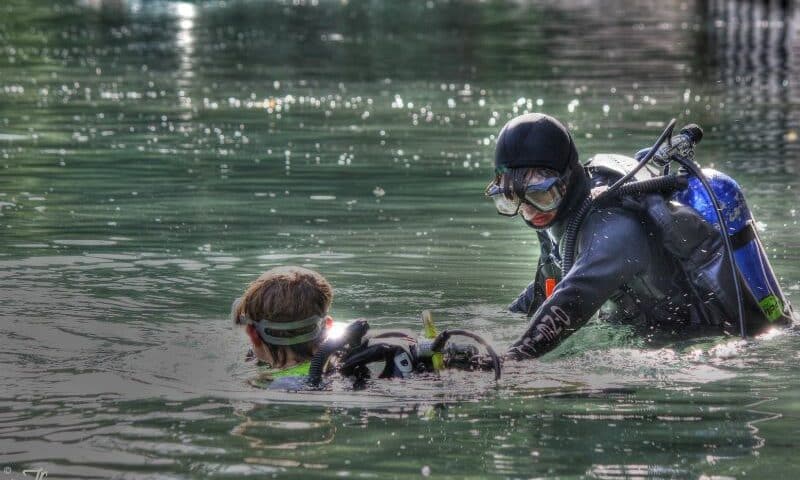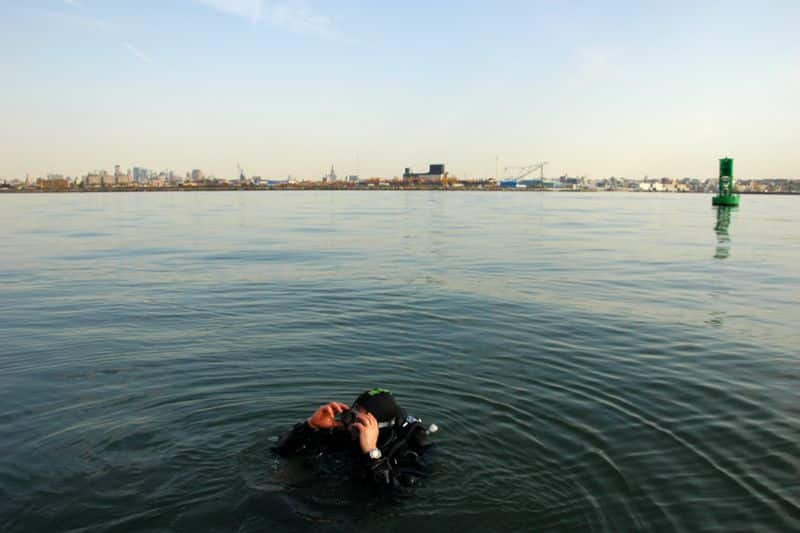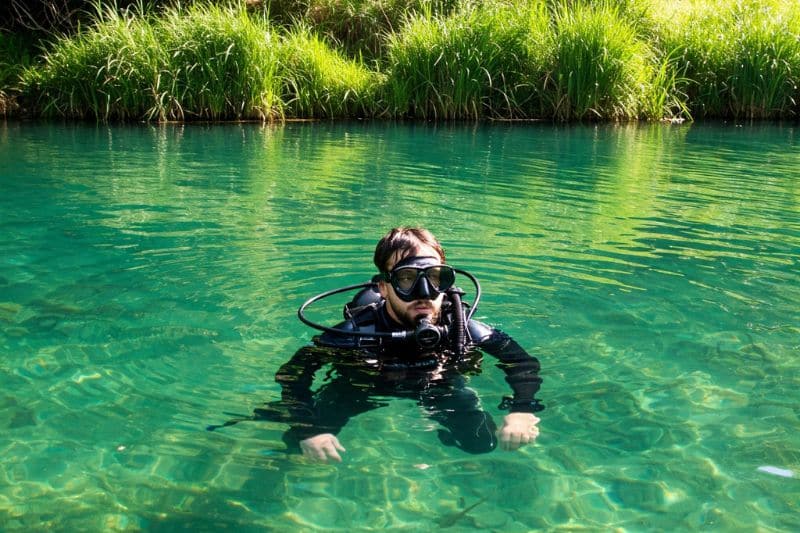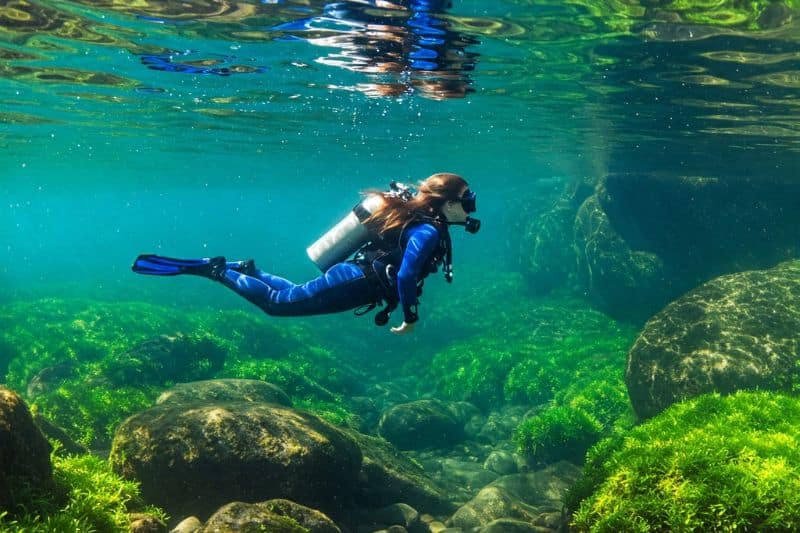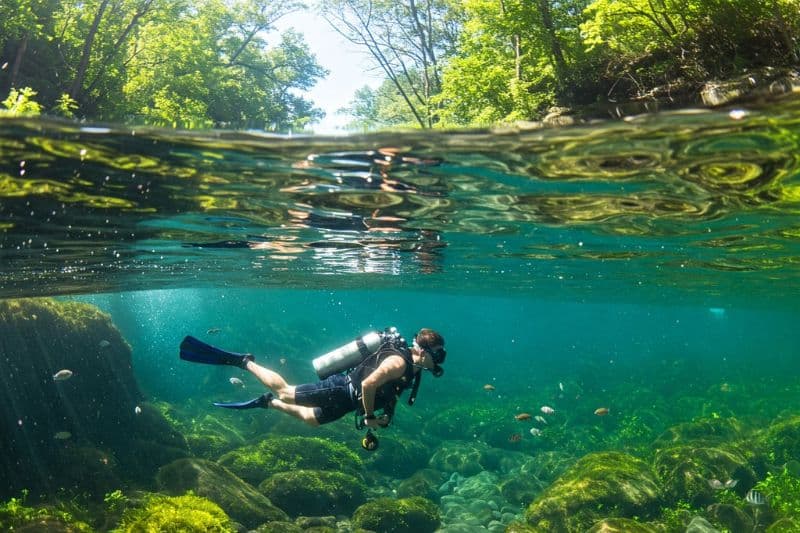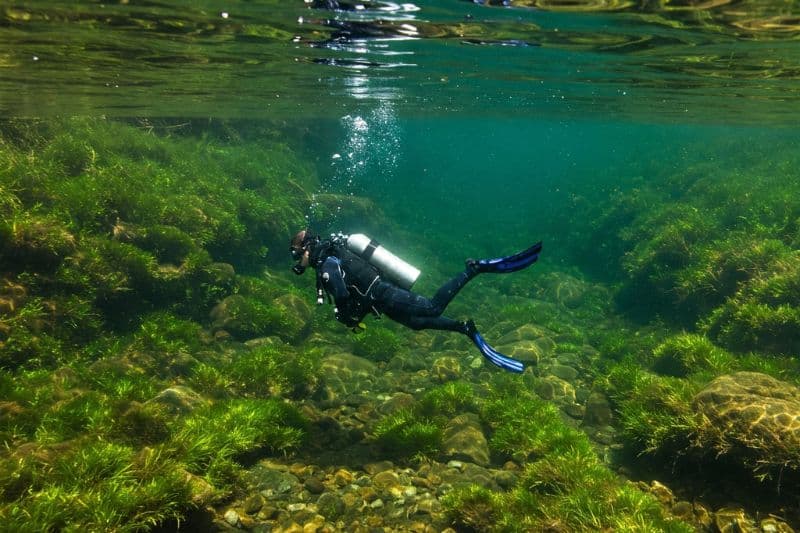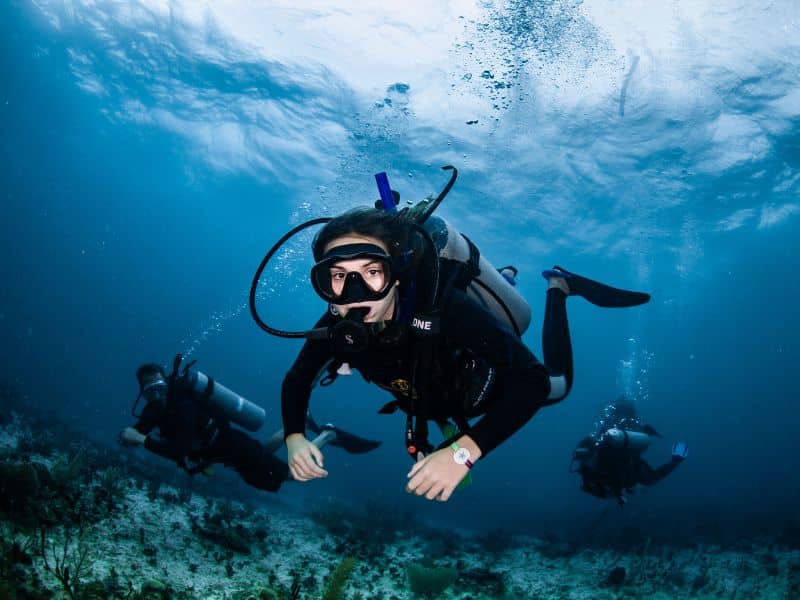Let’s talk about river diving.
Thought you’d seen it all underwater?
Think again.
There’s a kind of diving that has nothing to do with what you’re used to. No coral reefs. No turquoise waters. No Instagram-worthy fish clouds.
This is something different.
Not better. Not worse. Just river diving.
It’s freshwater diving. With current. With rocks.
When you dive in rivers, you’re entering places where visibility shifts from one second to the next. You’re breathing underwater, sure…, but you’re surrounded by earth, stones, plants, and many of the animals you’ll see don’t even have gills.
One day you spot an otter. Another day, a giant catfish hiding under branches. Or… something swimming. Yes, crocodiles swim.
River scuba diving isn’t a rival to ocean diving.
It’s just different. And that already makes it interesting, doesn’t it?
This one’s for you if you’ve ever wondered, “What’s it like to dive in a river?”
No worries, I’m not selling you anything. Dressel Divers dives in the ocean only.
But we will share ideas, insights, and reasons why more and more divers are trying river diving around the world.
By the end, you’ll know if it’s for you, and what it takes to get started.




